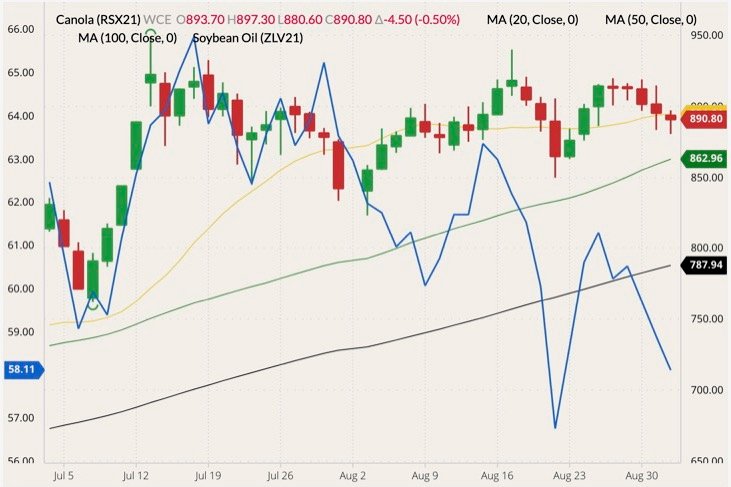MarketsFarm — If the October soyoil contract on the Chicago Board of Trade (CBOT) falls to 55 U.S. cents/lb., it’s likely ICE Futures canola will drop to around $850 per tonne, according to analyst Errol Anderson of ProMarket Communications in Calgary.
ICE November canola closed Wednesday at $890.80 per tonne, giving up $10.80 since the start of the week. During the same time, October soyoil gave up 1.59 U.S. cents, at 58.11 U.S. cents/lb.
“Then the next support level is $825,” Anderson said, noting there has been ongoing weakness in soyoil and the Chicago soy complex in general.
Read Also

U.S. grains: Wheat futures rise on supply snags in top-exporter Russia
U.S. wheat futures closed higher on Thursday on concerns over the limited availability of supplies for export in Russia, analysts said.
One of the major reasons for the retreat in soy is corn, he noted.
“We also expect that Chinese buying demand this coming year is going to be less aggressive, particularly on corn,” Anderson said.
With an increase in planted acres and a bumper crop to be had, China’s reliance on corn imports will be reduced, including those from the U.S.
“If the December corn contract angles towards US$5 per bushel, which it feels like it might, it’s going to overhang these markets,” Anderson said.
CBOT December corn finished Sept. 1 at US$5.2275 per bushel, losing 20 U.S. cents over three days.
However, Anderson said the losses in the canola market may not translate into lower cash prices.
“If the futures are dropping, but the crusher really needs the canola, in that event, the cash prices will be the basis.”
— Glen Hallick reports for MarketsFarm from Winnipeg.
















